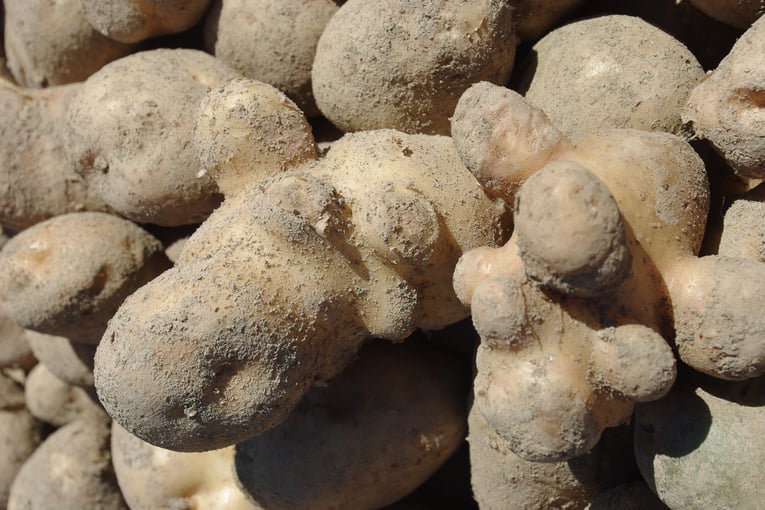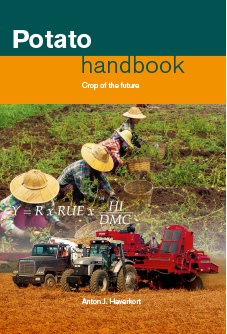
Malformed tubers take many shapes. The deformed or misshapen tubers may be knobby, doll-like, have bottle necks like dumbbells and have a spiked rose end (pear shaped).
All these appearances are the result of secondary growth. Secondary growth symptoms appear on tubers when they were formed and grew under optimal temperature, moisture and nitrogen conditions for some time. When these conditions are interrupted by heat and drought that stops tuber growth and afterward growth resumes ‘secondary growth’ is referred to.
Lower dry matter concentration
The loss of quality due to secondary growth is not only caused by the removal of deformed tubers at sorting but also due to the lower dry matter concentration in both primary and secondary tubers. Moreover, the dry matter is distributed unevenly over the tuber (and between tubers) and so are the reducing sugars. In pointed tubers, this leads to visible brown ‘sugar ends’ when chips of such tubers are fried. The major effort by growers to avoid secondary growth, apart from growing less susceptible varieties, is assuring a regular supply of water. In the case of a heat wave, they pay special attention to irrigation to cool down the high temperatures of the soil. Single stemmed plants also lead to more defects than plants that usually consist of several stems, say four or five growing from relatively large and old seed tubers.
Want to keep reading about the potato crop and tuber disorders?
Our Potato handbook is a global potato university in 1 book!
Buy your copy today and get a one-year free subscription to PotatoWorld magazine.

